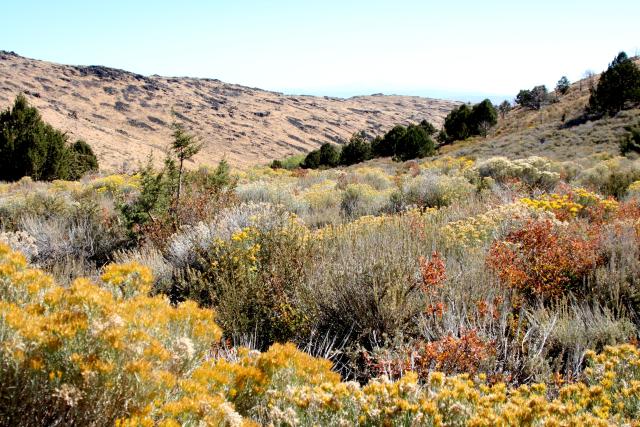Tackling invasive plants: a unified approach in the California High Desert
BLM natural resource specialists in northeast California are rising to the challenge of combating the spread of invasive plants across the high-desert rangelands. Through dedicated “boots on the ground” field work, strengthened partnerships, and innovative strategies, these specialists are making significant strides in preserving ecosystems on our public lands.
In the expansive million acres managed by the Eagle Lake Field Office in Susanville, a small, yet dedicated team is actively treating and monitoring 14,000 acres of identified invasive plant sites. Specialists are also conducting surveys on an additional 14,000 acres to detect the expansion of known populations and the potential incursion of new invasive species.
“As significant as these numbers are, they do not account for the lands severely impacted by invasive annual grasses like cheatgrass,” explained William Johnson, a range technician leading the Eagle Lake invasive species team. “That adds at least another 500,000 acres of rangeland to the challenge.”
These areas—once thriving with populations of indigenous grasses, forbs, leafy plants and shrubs—have adapted to the area’s unique fire ecology; they are now dominated by cheatgrass, which poses a high fire risk. Johnson also noted that invasive plant infestations afflict 170,000 acres of private land in Lassen County, posing additional threats to the health of public rangelands.

To tackle this escalating issue, the Eagle Lake Field Office is expanding partnerships with local governments, the U.S. Forest Service, and landowners. This collaborative effort is essential for finding effective solutions to the invasive plant problem, a viewpoint supported by Emily Ryan, manager of the Eagle Lake Field Office.
The Eagle Lake Field Office has commitments with the Plumas and Sierra County Weed Management Area and is working on a pending agreement with the new Lassen County Weed Management Area, which includes the county’s agriculture department and a resource conservation district.
“Additionally, we are assisting the Lassen National Forest with weed treatment projects, supporting joint efforts at Eagle Lake near the Bizz Johnson National Recreation Trail, and making efforts in conservation areas managed by one of our non-governmental partners, the Lassen Land and Trails Trust,” said Ryan, adding, “there is also collaborative work being done with several large ranch owners adjacent to BLM-managed lands to combat weed encroachment.”
Invasive plants pose a significant threat to the health of rangelands, spreading rapidly and taking advantage of openings in the landscape. They displace vital native species and forage plants that support livestock, deer, pronghorn, wild horses and burros, and wildlife such as the Greater sage-grouse.
Furthermore, these invasive species can alter soil chemistry, nitrogen cycling, and moisture content, leading to drastic changes in plant composition and contributing to extreme wildfire behavior.
BLM California’s Weeds and Invasives Program recognizes that invasive plants cannot be controlled by scattered piecemeal efforts. Cooperative, coordinated and committed efforts are needed to address the problem, regardless of jurisdiction and boundary.

The Eagle Lake Field Office has subscribed to that approach and has a long history of cooperation and partnerships in invasive species management. Past initiatives have identified more than 40 invasive plant species of concern, with current efforts focused on aggressively treating and eradicating 14 of these species that significantly impact rangeland health and critical habitat.
Among these, cotton thistle has the largest footprint, covering more than 6,000 acres, followed by perennial pepper weed, Salvia aethiopis, yellowstar-thistle, knapweeds, and hoary cress.
In 2025, new local threats are growing. Invasive plants including leafy spurge, rush skeletonweed, purple loosestrife, Centaurea iberica, and spiny cocklebur are just a few of the newer infestations that have been reported in the area.
The fight against invasive plants is ongoing, but with dedicated teamwork and community engagement, there is hope for a healthier, more resilient landscape.
Jeff Fontana
Related Stories
- Tackling fire fuels with friends
- BLM recreation sites available to all: Exploring accessibility on California’s public lands
- BLM California partners to secure America’s border
- Meet the Engineers: BLM California celebrates 2025 National Engineers Week by getting to know some of our finest!
- Honoring Excellence in Service: Ranger Perez Recognized as BLM California Ranger of the Year
